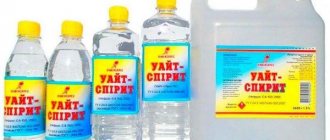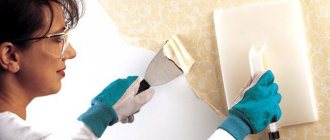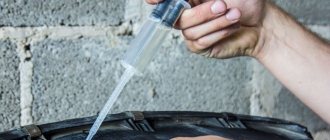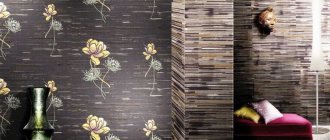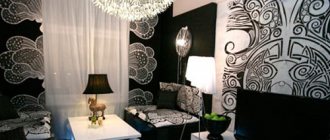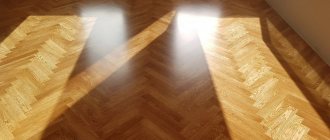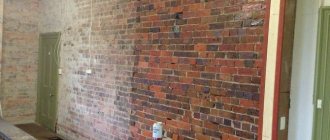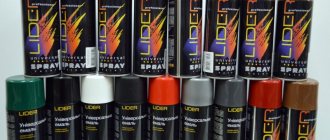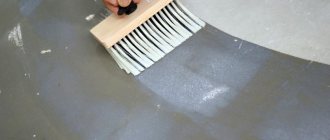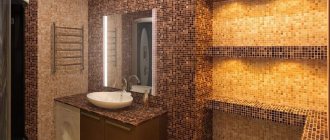Water-based acrylic varnish is a water-dispersive composition, which, in addition to acrylic and water, also contains some additives that improve its technical characteristics. In addition to water-based acrylic varnish, there are also pure acrylic varnishes and acrylic-polyurethane varnishes. These varnishes have a slightly different purpose and are used for stone, for outdoor work, for concrete, there is a heat-resistant acrylic varnish, for protecting forged gratings and other metal fences.
But now we will talk specifically about water-based acrylic varnish. The scope of its application is also very wide. Water-based acrylic varnish can be used for exterior and interior work, for parquet floors, for stairs, for furniture made of natural wood, even for children's rooms and as a panel varnish. Also, water-based acrylic varnishes are used for decoupage and coating of acrylic paints on works of art.
Water-based varnishes: general information
Water-based varnish or aqualac is a popular paint and varnish material that is a worthy alternative to alcohol-based varnishes. This is an environmentally friendly material that has long won the love of ordinary people, especially those who care about their own health and prefer to surround themselves with environmentally safe things.
This decorative and finishing material consists of natural components, which means it is not characterized by toxic fumes or unpleasant odors, it is easy to use and protects wooden surfaces from destruction and damage for a long time.
Composition of scuba tanks
The safety of water-based varnish is also indicated by its composition, because aqualak consists exclusively of water and natural emulsifiers (substances capable of creating an emulsion from immiscible components).
The emulsifier in such a varnish can be one of two substances:
- acrylic;
- polyurethane.
In addition to the main components, the composition may contain excipients:
- antiseptics (protecting wood from fungus and pests);
- liquid polymers;
- plasticizers (thanks to them, the varnish acquires the necessary strength);
- solvents (their share can range from 5 to 15%).
How to coat a surface with tinted water-based varnish
Stirring the tinted product must be especially thorough, since the pigment particles may be distributed unevenly throughout the volume. When adding water to such a varnish or mixing several cans, it is better to prepare a mixture for the entire surface at once. If you paint by diluting and mixing the varnish in parts, you can get areas of different shades.
Test tinted varnish on selected areas
You can tint water-based varnish yourself. To do this, pour into it a little (5-8% of the volume) tinting impregnation, which also has a water base.
Care in applying varnish with tone is required. If the layer in some area is thicker, the coating in this place will be darker. To avoid this, it is advisable to use a spray gun or a foam swab to apply tinted varnish.
2-3 layers of thin layers of tinted varnish are better than one thick one - with several layers the color of the coating is more uniform.
To obtain a beautiful, visually deep layer of varnish, a darker varnish is first applied to the wood, and the upper layers are made colorless or lighter.
Two-component varnish coating withstands heavy loads
Never apply varnish to an old coating that has worn off in places on the surface - in these places the finish will look lighter. In this case, the old coating will have to be cleaned off. Although there is another option - use a varnish darker than the old one.
Keep in mind that if the old varnish has worn down to the ground in some area, the exposed wood will absorb the new varnish more actively than the rest of the surface. It is not necessary to remove all the old coating - just coat it twice with primer, and the absorbency will be evened out. You can do it differently: instead of impregnating, cover the surface with a colorless varnish, and after it dries - with a tinted one.
Classification of water-based varnishes
All scuba gear can be divided into two large groups:
- Single-component. They are called so because they contain only one active component - acrylic or polyurethane;
- Two-component. The name suggests that this paint and varnish material contains two polymers at once - acrylic and polyurethane.
One-component varnishes
- Acrylic varnishes
Most experts call these varnishes the most environmentally friendly among all paints and varnishes. Unlike many other varnishes, this material does not create a dense varnish film on the surface, and this circumstance allows the wood to “breathe”. It should be noted that the elasticity of acrylic varnishes is much higher than that of competitors. This feature makes applying varnish a simple task that even a non-professional can successfully handle.
At the same time, acrylic varnishes also have some disadvantages. First, they are not as durable as their polyurethane counterparts. And secondly, these materials are more suitable for covering surfaces inside a building, while when processing external surfaces they do not demonstrate their best qualities.
The disadvantages of acrylic varnish include the loss of its protective properties at temperatures below -25ºC. In such conditions, the varnish begins to crack, which means it will require restoration in the future. Acrylic varnish is also unstable to high humidity. In such an uncomfortable environment, it quickly becomes cloudy, bubbles may appear on it, but even worse, it begins to lag behind the base.
Experts agree that water-based varnishes with an acrylic base perform excellent indoors, but are completely unsuitable for finishing facades and outdoor use.
- Polyurethane varnishes
These are extremely durable paint coatings that are many times superior to their acrylic “brothers” in terms of reliability and ability to withstand external negative influences. It is not without reason that polyurethane varnishes are used to treat the internal and external surfaces of administrative buildings and structures.
These materials are able to withstand high mechanical loads and are resistant to damage. We can say that these varnishes are universal and have a wider range of applications than acrylic-based coatings.
Two-component varnishes
As mentioned above, two-component varnishes contain two active components at once. In this case, acrylic is considered the main one, and polyurethane is added to improve the performance characteristics of the material.
Practice shows that varnishes containing both components are the most reliable and wear-resistant, and therefore are used in intensively used premises. The surface, protected by a two-component material, has additional protection from chemical influences, the ingress of alcohol and other liquids, and also perfectly withstands increased operating loads (including impacts). Moreover, two-component varnishes are fire resistant, which means they can protect your home from fire! In addition, they do not have an unpleasant odor, which is also a plus when choosing a suitable material for protecting wood.
Types of varnishes by composition
The composition determines:
- characteristics of the mixture (drying time, coating thickness, presence or absence of odor);
- conditions of use (for external or internal work).
The price of paintwork depends on these factors, manufacturer and brand.
Oil varnishes for wood
- They are based on oils and resins.
- Dries in 1-3 days.
- Penetrates deeply into the rock.
- For interior work only.
- Process furniture or other wooden objects.
- Not suitable for floor coverings.
The proportion of oil content determines the period of complete hardening of the applied layer.
So, oil varnishes are:
- lean (oil content from 35 to 55%);
- average (from 55 to 65%);
- fatty (from 65 to 85%).
The more oil contained in the composition, the faster the drying, but the greater the susceptibility to wear.
Before applying with a brush, dilute the product to a comfortable consistency, since the mixture is initially too thick.
Artificial resins and oils are now used in production, which has reduced the price of the product. Previously, the composition contained natural oils.
Resin
An ideal alternative to oil based ones. The composition is based on the inclusion of synthetic resins (thermoplastic, thermosetting) and natural (amber).
Alkyd varnishes
They are produced on the basis of alkyd resins, with the addition of solvents (solvent or white spirit) and driers to accelerate drying. Alkyd mixtures are resistant to moisture and temperature changes. They are inexpensive, and their penetration properties into the rock are high.
The applied layer remains on the surface for two to three years. The period of complete polymerization is two days.
Suitable for wooden floors, floating floors, including heated floors, furniture. The compounds are toxic due to the solvent.
It is advisable to work in protective equipment (gloves, respirator).
They are divided into pentaphthalic (PF) and glyphthalic (GF). From the last category, GF-166 and GF-177 are popular. Both representatives have a transparent glossy sheen and harden after 48 hours (GF-177 is faster).
Alcohol
Alcohol varnishes (varnishes) have a narrow scope of application. The composition is based on the content of ethyl alcohol in which the resin is dissolved. This is a quick-drying varnish for wood. Dries in less than 1 hour (20-30 minutes), which is achieved by evaporating the alcohol after applying the layer.
Visually, alcohol mixtures are glossy. Used for coating musical instruments, furniture, leather, glass.
Alkyd-urea
Contains pentaphthalic or glypthal resins, urea. They are two-component and polymerize only after adding an acid-based hardener. Designed for interior work.
They give the surface a strong shine, the coating is highly durable and moisture resistant.
Can be applied to parquet boards or wood floors of any species. They cover indoor furniture.
Epoxy
This is a transparent composition that hardens after adding a hardener to the epoxy resin.
Epoxy varnish on wood is resistant to heavy loads, so it can be used on solid floors, parquet, and can be used to update interior doors or other wooden products.
The composition is moisture resistant and can be used for both interior and exterior work. Dries in half a day.
Polyester
These are multicomponent products based on the inclusion of polyester resins. It is applied with a special gun, so this option is not suitable for beginners. After complete drying, a transparent film of great thickness is formed, which ensures high strength and moisture resistance. Withstands high temperatures and exposure to chemicals.
Wooden musical instruments are usually processed.
Nitrocellulose
Nitrocellulose (or cellulose ether) varnishes contain organic thinners, cellulose nitrate, resins and plasticizers that improve characteristics.
Despite their high resistance to moisture, the mixtures do not withstand atmospheric conditions and do not have great mechanical strength. Over time, the film may peel off from the surface. It can be polished successfully and dries quickly (20-50 minutes).
There are both glossy (NTs-218) and matte (NTs-243) coatings.
Nitrovarnishes are toxic because they contain a solvent. You only need to varnish wood using a respirator and ventilate the room well.
After the solvent has evaporated, the applied layer is safe.
Not used for floors due to weak strength. It is often used to cover wooden furniture, pencils and music. tools. The varnish does not tolerate direct sunlight, so it is better not to use it outside.
Acrylic-urethane
This is a water-soluble, odorless varnish with high adhesion. After drying, the film is resistant to moisture, so you can cover wood in baths, saunas, and apply it in bathrooms. The coating is reliable and durable, does not affect humans, and is safe. It must be used at a temperature not lower than +12 °C, and stored at a temperature below zero, but not less than -5 °C.
Alkyd-urethane
Used as yacht varnishes.
Contains toxic substances (toluene and xylene), the fumes of which affect humans.
This is the best varnish for exterior woodwork, frost-resistant, waterproof, but smells bad. The coating lasts for about five years.
It is not recommended to use indoors. Even after drying, evaporation of substances may continue.
Polyurethane
There are one-component, two- and three-component varnish. The two-component product is prepared before use by mixing with a hardener. The three-component one also contains a solvent.
This is one of the most effective materials in terms of coating strength. But it takes a very long time to dry (2-3 weeks), with a strong pungent odor.
After drying, the layer is resistant to strong mechanical loads, moisture, any atmospheric conditions, chemicals. substances, creates anti-corrosion protection.
External and internal use. Polyurethane varnishes are popular for treating garden structures, yachts and boats, parquet boards, and walls.
Acrylic varnishes
Water-based acrylic varnish provides wood with effective fire protection due to the absence of flammable substances in its composition. These mixtures are odorless, safe for humans, and can be used for opening children's rooms.
They have high adhesion to wood and are vapor permeable, but their strength is not the highest. Water-based varnish is applied only to the primed surface and dries for up to 15 days.
Application is also possible on brick and concrete bases indoors.
Bituminous
Painting wood with bitumen varnish makes it resistant to moisture and acid-base environments.
By default it has a brown tint. The treated surface becomes visually pleasing.
It is applied in a thin layer, and small parts can be coated by dipping.
Tinting mixtures
You can paint a wooden door, furniture, parquet boards. Fulfills a protective and decorative purpose. Visually darkens the wood, giving it the appearance of expensive species, increases the strength of the base and protects against fungus and mold.
Food varnishes
Apply to wooden utensils that come into contact with food. There will be no consequences, the varnish is safe. Suitable for use on cribs and toys.
Types of varnishes by texture
When choosing a varnish, maintaining the texture of the wood treated with a protective layer is of great importance. In this regard, scuba tanks can be divided into 3 types:
— Glossy varnish. This is a classic version of varnish coating that creates an absolutely transparent shiny film on the surface. In addition to its pronounced shine, the varnish layer is extremely durable and abrasion-resistant. By the way, in addition to transparent glossy varnish, you can find on sale material with shades, for example, gold or silver.
- Matt lacquer. To achieve a noble matte surface, manufacturers mix urethane and alkyd resins. As a result, after application, an opaque thin film is formed on the surface, no less reliable than a glossy varnish, but more seasoned and noble.
— Semi-matte varnish. Semi-matte material is extremely popular among acrylic varnishes. Perfectly highlighting the structure of the wood, this varnish creates a chic, unobtrusive shine.
Important! It should be noted that semi-matte varnish can only be applied to perfectly polished surfaces, because even the smallest imperfections under a layer of semi-matte varnish will be clearly visible.
Advantages of water-based varnishes
Aqualacs successfully compete with alcohol-based paints and varnishes due to a number of advantages. In this regard, the main advantages of this material include:
- Environmentally friendly. The natural base of Aqualak is a key advantage that other paints and varnishes cannot boast of. During the process of application and drying, this material does not form toxic fumes, which means you and your household will be completely safe, both during all finishing work and during operation.
- Economical. Based on the ratio of price and consumption per 1 sq.m. surface, this material outperforms many competitors, which attracts increased attention from buyers.
- Fast drying. Water-based varnishes dry quite quickly (no more than 5 hours until completely dry). Moreover, some types of varnish dry in literally 2-3 hours. This feature allows you to significantly save time during repairs, and this is another important advantage.
- Fire resistance. Most paint and varnish coatings are fire hazardous because they consist of alcohols and resins. But this material, which is 85% water, is not subject to combustion and behaves well even near stoves and portable heating devices. Moreover, this varnish can be used as a protective material in areas with a high fire hazard.
- Durability. Practice shows that scuba tanks are 1.5 times more durable than alcohol-based paints and varnishes. And this fact, taking into account the affordable price of such material, makes water-based varnishes extremely attractive in the eyes of the buyer.
- Reliable protection. Any varnish covers the wooden surface with a protective film. However, even a scuba film provides the most reliable protection. The fact is that the surface tension of this film is not too strong, and therefore it is less prone to cracking and better withstands mechanical pressure and shock.
- High adhesion. Thanks to the high level of adhesion, this material reliably adheres to the working surface and stays on it for many years without coming off, cracking, or chipping.
- Antiseptic properties. Water-based acrylic varnish has the ability to resist fungus, bacteria and pests that can damage wood. In this regard, acrylic varnish can be used to treat surfaces located in rooms with high humidity (kitchen, bathroom). But it is better to avoid treating façade parts with acrylic varnish.
- UV resistance. Water-based varnishes withstand exposure to sunlight very well. Even after prolonged exposure to the sun, they do not fade, become cloudy or crack.
LiveInternetLiveInternet
Quote from fljuida
Read in full In your quotation book or community!
tips from specialists in working with varnishes and recipes for homemade varnishes
Interesting recipes for homemade varnishes and the transfer of experience in working with varnishes. Source
To give the wood moisture resistance and a pleasant appearance, it is coated with so-called wax varnish. This varnish is made from equal parts by weight of beeswax, gum turpentine (natural) and rosin (ordinary). The composition, heated to a hot state, is applied with a brush or brush onto dry wood that is heated to a very warm (to the touch) state. After the varnish has absorbed into the wood, the coating is repeated. The part is covered until the varnish stops being absorbed. Then polished with cloth.
The covering turns out beautiful, but the processed item is only suitable for hanging on the wall, nothing more. Any impact leaves marks. Temperature, fingers, ... Water generally causes whitish spots to appear on the eyes. So the durability of the coating is minimal. When removed, this coating terribly clogs the sanding paper,
Mahogany varnish:
a) Dark: in 1 kg of 96° denatured alcohol, dissolve, with frequent stirring, 500 g of shellac, 200 g of sandarac powder and 100 g of elemi resin and mastic (in tear-shaped drops). After complete dissolution, add 10 g of castor oil, stir well again and filter. At the same time, dissolve 10 g of red-brown aniline dye in a water bath in 500 g of 96° alcohol, mix both solutions while they are warm, and add 50 g of lavender oil at the end.
b) Light: the same preparation method as indicated above, only a smaller amount of red-brown aniline dye is used for coloring.
It’s not so easy to remove even from a small and flat area.
Shellac (preferably light in color) is poured into a liter jar at 1/4 height (any other cylindrical transparent container is suitable). Add ethyl alcohol (at least 96% strength) and stir with a wooden stick until the shellac is completely dissolved. Then add another teaspoon of shellac and dissolve it. Within 20-30 minutes, a precipitate forms and is removed. The resulting solution is poured into a metal jar and placed in a water bath. You can use a pan of hot water as a water bath. Do not bring the varnish to a boil, as it foams quickly and is extremely flammable. An indicator of the readiness of the varnish is its “fermentation,” during which light stripes intensively diverge from the center to the periphery on the surface of the varnish. Then the varnish is slightly cooled and filtered through 2-3 layers of gauze. After complete cooling, the varnish is ready for use. Properly cooked shellac varnish is light brown in color and is similar in thickness to fruit and berry jelly.
Bleached shellac 180 g, Manila Colac 180 g, mastic 180 g, Venetian turpentine 45 g, alcohol 3 kg, boric acid 15 g. Or also light shellac 4 kg, thick turpentine 2.5, alcohol 14.
Polish is a beautiful thing and very durable. I think its only drawback is that it is fragile and cannot be applied to elements that bend during use. Personally, I use polyurethane and acrylic varnishes. I prefer using solvents such as solvent. I tried these water-based varnishes (I took Russian ones), they are also not bad, although the shine is rather weak. Water-based varnishes work much faster; literally after 1-2 hours you can sand a layer and apply the next one, however, these varnishes foam when mixed and, due to air bubbles, the quality of the coating is not ideal. The bubbles, of course, go away, but still not the same. And those that are solvent-based are a different matter. You have to wait up to a day between layers, otherwise the surface will not be polished, but when you do it for yourself and for centuries, this is nothing. After six layers with intermediate sanding, the result is a surface indistinguishable from polishing in terms of gloss and strength (if you take “parquet” varnish).
It’s easier to take varnish like PF-157 or similar. Just two layers, well three, are enough. The coating is smooth even without intermediate sanding. And downright barbaric brilliance.
I covered the chair with one layer of Texturol and on top two layers of NTs-2139 (matte). Apply with a brush, rubbing thoroughly. I liked the result, it looks good. In operation for about six months, flight is normal. Of course, I didn’t specifically water it with water, but water got in more than once, there were no traces. I was also advised to apply parquet varnish as a top layer; EP-2146 parquet varnish goes well on NTs-2139.
In addition to the terrible shine, PF varnishes have one bad thing - the time for complete drying (not setting) is about a month.
For polyurethane ones, it is also not recommended to put a full load on the varnish for about a week (an example from the instructions is this: if the window sill is damaged, then do not put flowers on it). In practice, I didn’t varnish the floors, but the furniture started to “slip” from the first day, and nothing bad came out, no defects. By the way, today in the store I saw a polyurethane varnish from SPECTRA-TONE and it says “polyurethane liquid plastic.” I read in the annotation that when coated, it produces a film thickness of 0.9 mm (model 285) and 1.4 mm (model 280). By the way, 1.4 mm is like ship varnish. It will be interesting to try in your spare time what kind of plastic this is. Regarding NC: I made a high chair for my little son and coated it with nitro varnish. If the baby left puddles of water or tea on it in the evening, then in the morning white spots appeared. I didn’t try to remove them, I just noticed this nuisance to myself.
As for the secrets of Stradivarius varnish, I have my own point of view on this issue: it is impossible to improve the acoustics of wood by applying any composition to it, and the main task is not to spoil the acoustic parameters inherent in wood by nature itself with too hard or thick varnish. My varnish is not an attempt to copy the varnishes of the old masters; I set myself the task of finding an acoustic analogue. I feel the same way about all other secrets. The task is not to open and copy something incomprehensible, but to correctly pose the problem and find an individual solution. Similar to varnish, incorrectly applied primer can greatly damage the acoustics. For example, if the soil is unevenly absorbed into the wood, this will result in a very uneven sound from the instrument. It is unlikely to improve the acoustic parameters of wood using some special soil composition. I believe that both the varnish and the primer should approximately correspond in their density and elasticity to these parameters of the tree and not change their properties over time.
For painting work, varnishes are sold ready for use. They are solutions of various resins in organic volatile solvents. Varnishes are colorless and colored. With their help, a shiny transparent coating is obtained on the surface to be finished.
Industrially produced varnishes are divided into nitrocellulose, alkyd, bitumen and resins, depending on the type of binder.
The most available for transparent finishing at present are nitrocellulose varnishes (nitrovarnishes), in which nitrocellulose is the film-forming substance, and the solvent is a mixture of acetone with some other quickly evaporating substances. Of the various nitrocellulose varnishes available in stores, the greatest preference should be given to furniture varnishes NTs-222 and NTs-228. Their main positive quality is that they are colorless. This in itself is already very important for transparent finishing. These varnishes are easy to apply by hand, dry quickly, and can be used not only for varnishing, but also for polishing, if they are diluted to the required extent with solvent 646 or simply acetone.
Nitrocellulose varnishes for wood finishing are available in various brands. The lightest and fastest-drying varnish is NTs-218. It is the most common. In case of thickening, it is diluted with solvent 646. The varnish gives a glossy surface and is used for finishing indoor products.
Currently, NTs-223 and NTs-584 varnishes are also used, which make it possible to obtain glossy surfaces. Varnish NTs-243 is matte, it gives a silky finish without shine.
Bituminous varnish BT-577 after hardening forms a homogeneous, even black film. The drying time of the film at 20ºC is no more than 24 hours. This varnish is intended to protect the surfaces of metal structures and products. It is also used to make aluminum paint. The varnish is applied to the surface by brush or spray. Before use, the varnish should be diluted to working viscosity with white spirit, solvent, turpentine or a mixture thereof.
All bituminous varnishes are applied in one layer by brush or spray. They are diluted with turpentine or RS-2 thinner. The coating dries in 24 hours. In order to save money, in some cases bituminous paints and varnishes, due to their low cost, are used as primers for more valuable paints and varnishes.
To improve the quality of the coating, drying oil, oil paint and even paints with synthetic binders are added to bitumen varnishes. Solvents for bituminous varnishes are gasoline and turpentine.
In addition to bitumen varnish, metal surfaces are also painted black using BT-242 asphalt varnish. and asphalt-bitumen, the properties of which are identical. The industry also currently produces bitumen anti-corrosion acid-resistant varnish BT-783, pitch varnish, and varnish VT-5100.
BT-577 varnish mixed with PAP-2 powder forms a paint that, after hardening, creates an even silver film. The drying time of the paint at 20ºC is no more than 16 hours. The paint is used for painting metal products used in atmospheric conditions. Varnish and paint are toxic and fire hazardous.
Currently, alkyd varnishes (pentaphthalic and hyphthalic) are in demand. They are produced in a wide range. The most common varnish is PF-283 (formerly 4C). It is used for finishing wood, metal, and also for protecting surfaces used indoors that are painted with oil or alkyd paints. The varnish is applied by spraying or brushing. Solvents for it are white spirit, xylene, turpentine or a mixture of one of these solvents with white spirit in a 1:1 ratio. Drying mode at 20º C - 36 hours.
Varnish PF-231 is used for coating parquet and painted floors, finishing other wooden surfaces, as well as for coating oil paints of various tones. After coating with this varnish, the surface becomes smooth, smooth, and glossy. This varnish is waterproof and wear-resistant. It is applied in three to four layers by spraying or brushing onto a scraped surface. Solvents - white spirit, turpentine or thinner No. 1, No. 2 for artistic paints. Drying mode: at 18-20ºС - 16-24 hours for the previous layers, three days - for the last layer.
Varnish GF-166 is used for coating oil paints, wood and metal surfaces, and is not exposed to atmospheric influences. The coating is also resistant to water with temperatures up to 20ºС. The varnish is available in dark brown color. It is applied in two layers by pneumatic spraying or brush. As a solvent, you can use white spirit, xylene, solvent, turpentine or a mixture of one of them with white spirit in a 1:1 ratio. Drying time at 20ºС - 48 hours.
Among the most weather-resistant varnishes intended for outdoor use are varnishes based on polyacrylates, for example AK-156. It can be applied to metal, glass, plaster, concrete and primed wood. This varnish is commercially produced both colorless and colored. If necessary, it is diluted with solvent 646. Work is performed with a brush or spray paint in one or two layers. The first layer is dried for 24 hours.
For the restoration of old furniture, as well as for homemade furniture, alcohol, nitrocellulose, oil and other varnishes are used.
The most suitable in terms of properties and ease of working by hand are alcohol shellac varnish and alcohol shellac polish, which have been known for a long time. The foaming agent in them is shellac, a resin secreted by special insects, and the solvent is ethyl alcohol. Polish differs from varnish only in the concentration of the solution. Varnish contains 30% resin, and polish usually contains no more than 10%. This allows polish to be applied in thinner, smoother layers than varnish. Unfortunately, alcohol shellac varnish and polish are not currently available for sale. But it doesn’t hurt to know about these materials.
To clog pores during varnishing and polishing, you can use various pore fillers. But they are rarely used at home. A good filler for transparent finishes is the varnish itself.
Thank you for attention 
storeroom of technicians and masterpieces of craftswomen
Disadvantages of water-based varnishes
- The need to comply with technological conditions. It should be noted that aqualak is a capricious material, the operation of which requires compliance with a number of conditions. In particular, in the room where this material is used it is necessary to maintain the temperature within the range from -15ºC to + 20ºC. And the humidity level should not go beyond the range of 55-60%. If these conditions are not met, the durability of the water-based varnish will be noticeably reduced, it will quickly begin to become cloudy, and the wood underneath will darken.
- The need to humidify the air during the application of varnish. To obtain the most durable surface film, water-soluble varnish should be applied at an air humidity of around 50%. To achieve this indicator, the air in the room will have to be regularly humidified using a sprayer.
- The need to apply several layers. To ensure high-quality protection of the wooden surface, water-based varnish should be applied in several layers.
Assessing the pros and cons of this material, many ordinary people agree that the advantages of aqualak many times exceed the disadvantages of this material. Thus, if you have to varnish a small area, and especially inside the house, water-based varnish should be the material of choice.
Scope of application of water-soluble varnishes
Depending on the varieties, and therefore the presence of certain properties, the scope of use of scuba tanks may differ significantly.
— Water-based acrylic varnishes are not the most suitable choice for flooring, and this is why this material does not tolerate increased loads. If you choose them as a floor covering, then only for non-traversable rooms in which many people do not gather.
— For a small room in which minimal load will be placed on the floor, it is enough to purchase a one-component varnish. In addition, it is sold ready-made and does not require additional components.
— If you have to apply a coating to a large living room floor, pay attention to a two-component varnish. Remember that before use, the main component must be combined with a hardener, thoroughly mix the resulting mixture, and only then begin work. In addition, depending on the level of humidity in the room, various antibacterial components and surface-strengthening plasticizers can be added to the varnish.
Important! If you need to cover wooden parquet made of larch or pine, you should opt for a two-component varnish.
— One-component acrylic varnishes are not intended for covering outdoor surfaces. If you decide to ignore this rule, be prepared for the fact that under the influence of scorching sun and wind, fog and snow, this coating will last no more than 1 year.
— Bearing in mind the environmental friendliness of water-soluble varnish, that during application and during operation it does not emit formaldehyde and other dangerous toxins, you can safely treat floors, ceilings and walls in a bedroom or children’s room with this varnish.
— In addition, acrylic varnish is often chosen by masters of decorative and applied arts for their works. This material is often used to cover decorative elements in the interior.
— Polyurethane varnish is stronger and more wear-resistant, and therefore it is used for treating floors or walls in administrative buildings, trade pavilions and educational institutions.
— Finally, when choosing a varnish for the floor, walls or window frames, remember that such a coating should highlight the advantages of the main surface. In this regard, in a poorly lit room where sunlight rarely reaches, glossy varnish looks better. But in a bright and sunny room, matte and semi-matte varnish looks exceptionally noble.
Where to use water-based varnish
We list the surfaces and products that are most often treated with water-based varnishes.
- wooden surfaces of the facade of a house or bathhouse, gazebos and other buildings (except acrylic varnish);
- walls, ceilings indoors;
- parquet, laminate or deck board floors;
- wooden stairs and window frames;
- brick, panel, glass, metal and plastic surfaces, plaster and even wallpaper;
- wooden toys and wooden children's accessories.
How to apply water-soluble varnish
Working with aqualak is not the most technically complex process, but it has a number of features that you need to know before applying this paint coating. So:
1. Before you start applying varnish to a wooden surface, it must be prepared. Using fine sandpaper, it is important to remove the previous coating, be it paint or varnish. If you have to work with freshly laid parquet or laminate, you can simply remove surface dirt and wipe the floor with a damp cloth.
If there are defects on the wooden surface (cracks, gouges, dents), they must be puttied and also treated with sandpaper. After waiting for the surface to dry completely, you can move on to the next stage.
2. Before applying varnish, the surface must be treated with a primer. Ideally, the primer mixture should have a base similar to varnish (a wood primer is suitable for aqualac applied to wood). Naturally, both protective materials must be water-based.
3. The primer mixture needs to dry thoroughly, for which you need to wait a day. After the allotted time, you need to walk over the dried surface with fine sandpaper and remove dust with a vacuum cleaner.
Important! Ideally, 2-3 layers of primer should be applied to the wall. This will not only strengthen the wall, but will also reduce varnish consumption.
4. Prepare the necessary tools to coat the surface with varnish. You will need the aqualak itself, a roller and a container in which it is convenient to wet the working tool.
Important! Water-soluble varnishes cannot be applied with brushes. To work with such material, you should use a roller, and if the surfaces are too large, a spray gun. The brush leaves large stains that will be visible to the naked eye. Therefore, even in hard-to-reach places it is better to use rollers of appropriate size.
5. Fill the tray with varnish, and if necessary, mix the ingredients and mix them thoroughly. After moistening the roller in the finished varnish, begin to roll it over the wall.
Important! Please note that the varnish is applied along the wall and leveled across. The movements should be soft and smooth, and the wall should be varnished without gaps.
6. After allowing the first layer to dry, which is approximately 3-4 hours, you can apply the second. According to experts, a reliable varnish coating requires the application of 3-5 layers.
7. After applying the surface coating, leave it for a week until completely dry. And after that, you can arrange furniture in the room without fear of scratching the varnished floor.
Step-by-step instructions for various techniques
Let's look at common and convenient ways to create an aqua manicure.
Dipping your nails in water
The simplest and most accessible is considered to be a water manicure with immersing nails in a container. It is done in the following sequence:
- Take the first pigmented varnish and drop it into the center of a container of water. The drop will immediately begin to spread over the surface.
- Drop a mixture of a different shade into the center of the resulting color circle.
- Then you can use the first shade or use another color. You can take any number of colors; the richer the palette, the more interesting the ornament. It is necessary to again make a drop in the center of the circle formed by the two previous compositions.
- As a rule, for a complex and graphic design, 10-20 circles are made on the surface of the water. They need to be done quickly so that the varnishes do not have time to dry out.
- Using a toothpick, needle or dots, draw lines on the resulting circles in any direction: across, along, from the center to the edge, diagonally. As a result, interesting patterns are formed. The end of a sharp tool does not need to be deeply immersed in water and it is recommended to wipe it after each line drawn so that the colored layers do not stick and thereby spoil the pattern.
- To transfer the design to the nail, dip your finger, nail side down, parallel to the water surface, into the center of the container. Hold motionless for 10-15 seconds so that the pattern does not smudge and is fixed on the nail. You can dip two fingers into the colored film at once.
- Collect the remaining colored film around your finger in the water with a toothpick or cotton swab.
- Remove the finger with the film attached to it from the water. Remove the protective tape and use a cotton swab soaked in nail polish remover to carefully remove excess polish film from the skin around the nail. Now it’s clear why you need to protect the skin around the nail. Otherwise, removing the color layer is problematic.
- Wait until the pattern dries. This will take a little longer than usual because varnishes with water take longer to dry. Apply a topcoat to protect your manicure from chipping and damage. Aqua manicure is ready!
The video shows the technique of creating patterns in more detail:
Water painting on nails can also be done using a gel base. All stages are performed in the same sequence. The only difference will be the need to dry the base layer, the main color if used for design, and the top coat in a lamp.
Without putting your finger in the water
This technique is also called dry manicure. This is due to the fact that the pattern is transferred to the nails in a frozen form. To do this you need:
- Perform the first five steps of the standard aqua manicure technique from the previous instructions.
- Leave the film on the surface of the water for about half an hour to dry completely.
- Carefully remove the resulting colored circle from the water and cut it into several pieces of the desired size.
- Colored pieces on your nails can be fixed with clear polish.
- When the design is dry, the excess film must be carefully removed with a nail file.
- Apply a layer of fixative varnish on top.
You can clearly see the dry manicure technique in the video:
Marble stains with hairspray
The aqua manicure technique is ideal for creating a marble pattern on your nails. It is also called foam stains.
To achieve this effect you must:
- Dissolve three to five drops of varnish of the same color on the surface of the liquid.
- Immediately, before they set and begin to harden, spray them once with hairspray or other hair spray.
- This way, a completely unusual and unique pattern is obtained, visually reminiscent of foam.
- Then we lower our fingernail into the water parallel to its surface and do everything in the same way as with a regular aqua manicure.
You can take a closer look at the marigold marbling technique in the video:
Popular manufacturers
The market for paint and varnish coatings is replete with the names of companies, each of which is ready to offer its own unique product. We chose the most popular manufacturers, according to buyers.
- Tikkurila
These are branded products that have long earned the love of customers due to their consistent quality and durability. Tikkurila is especially famous for its acrylic water-soluble varnishes. They are ideal for interior decoration, especially rooms that rarely receive sunlight. With prolonged exposure to ultraviolet radiation, this coating begins to deteriorate. And its consumption per 12 sq.m. is 1 liter.
- Eurotex
Among domestic manufacturers of paint and varnish products, this company is a leader, and all thanks to its versatility, ability to retain moisture, resistance to chemical attack and affordable price. In addition, 1 liter of varnish can cover 17 sq.m. surfaces. One has only to take into account that such a coating is not applied to old layers.
- 3V3
The French company is famous for its finishing coatings, but the two-component varnishes of this company received special love from customers, because such products have the highest strength and allow you to easily rearrange furniture or hold parties in the house without fear of damaging the varnished floor. The varnishes of this company are odorless, and their service life exceeds 7 years!
- Aqua Parade
This varnish is produced in our country, but from imported components. It boasts a wide range of materials and their excellent properties. Suffice it to say that the scuba tanks of this company are easy to wash, do not allow water to pass through and do not deteriorate under its influence. In addition, Aqua Parade paints are leaders in drying speed. It takes no more than 30 minutes for the layer to dry completely! The disadvantages of this product include only the consumption of 1 liter per 10 sq.m., and the high price for a domestic product.
Varnishing wooden surfaces is a common practice. And to ensure that your efforts are pleasing to the eye even after 5 years, use our advice and choose for yourself only the best water-soluble varnish!
Environmental friendliness of water-based varnish on wood
Water-based wood varnish is one of the environmentally friendly coatings. Its composition contains virtually no solvents or contains them in minimal quantities. Due to this, during the application of this coating to the surface, the release of harmful substances into the air is insignificant and does not pose a danger to nearby people. The varnish is almost odorless, does not cause allergic reactions, dries quickly, and also has a number of other advantages.
Advantages of using water-based varnish on wood:
- Environmental Safety
- Hypoallergenic, no pungent odor
- Fire safety
- Easy to apply
- Wear resistance
- Short drying period
- Good adhesion and spreadability
- Resistance to ultraviolet radiation, household chemicals and alcohol-containing products
- Resistance to mold and mildew
- Aesthetics
- Acceptable price
Due to its many advantages, varnish has gained great popularity and is actively used for treating floors, furniture, windows, doors and even musical instruments. This composition is indispensable when performing repair work of any complexity inside residential and office premises.
